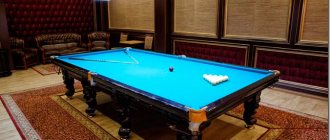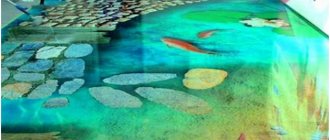Common Features of a Home Business
Home business is an option for those who want to earn money and not depend on anyone, but do not have the opportunity to fully open their own business.
The main advantages of a home business:
- Easy registration.
- Low taxes.
- Small costs.
- Free schedule.
- Independence.
- High income.
By high income, I mean profit, which in most cases is higher than earnings from a regular, stable job.
All these are features of a real business. It doesn’t matter where you work: rent a store, a small storefront, or sell goods online while sitting at home. You will still be a businessman to one degree or another.
But besides the advantages, home business has its disadvantages:
- Risks.
- Higher labor costs.
In order to be successful in business, you will have to work harder than at a regular job. Let's take an ordinary office as an example. When you are at lunch, doing nothing, watching social media or doing simple work, you are also getting paid. Perhaps in the end the salary will be less, but all the same, while you are in the office, time drips and you get money.
In a home business, the opposite is true. Income is measured by the amount of time spent. Since you are your own boss, you can no longer just do nothing. Every minute lost is lost profit.
Hobby as business
With a hobby from which you can make money, everything is somewhat simpler. It doesn’t take so much time and you won’t want to leave work, but will get paid for what you do in your free time. Embroidery just falls under the hobby, from which you can make good money.
From the very beginning, you should decide how you will perceive embroidery. Hobby as a business or as a means to earn extra money. Approaches will vary.
In the first case, you will have to take into account all the features of a home business, approach it responsibly and work very hard. The second option will bring much less money, but will allow you to do what you like in your free time and get pleasure from it and a small profit.
What kind of income can you receive?
The cost of embroidery of the most common sizes (20-40 cm on each side) averages from 200 (hand, machine with a household machine) to 800 (professional equipment) rubles.
The average selling price is from 1500 to 3000 rubles. and on each entrepreneur makes a profit of 700-2200 rubles. An embroidery machine does this work in 30-60 minutes. During a work shift, from 8 to 16 products are manufactured.
Without the participation of hired workers, the business owner will spend a third of the time (10 days per month) on developing or uploading designs, and the rest on production. In 20 days, the minimum potential profit will be 8*20*2200 = 352,000 rubles.
In reality, minus taxes, taking into account incomplete sales of goods and other negative factors, machine embroidery will bring 150-200 thousand rubles in monthly profit. This will pay off the investment within 1-1.5 years.
Calculation for hand embroidery is more difficult, since the work time is calculated in weeks and months. Such an activity becomes a serious business if the end product is unique things. Another option is to fulfill expensive orders from VIP clients.
How much can you earn from embroidery?
It is very difficult to estimate how much original work can earn you. It can be highly valued, or it can be of no use to anyone. So I will talk about popular works.
It all depends on your performance and the chosen format. A large picture can take 1-2 months to embroider, but it will be sold for up to a year. You can get about 10 thousand rubles from it in net profit.
Custom work pays the most. It is estimated to be 20 - 30% higher. Therefore, with the right approach, you can safely double the cost of work.
You can earn from 15 to 30 thousand rubles per month from cross stitch. If we consider it as a hobby - 10-15 thousand.
Choosing a promising type of embroidery: current ideas
If you consider embroidery only as a hobby, then, of course, you should focus on what is close and interesting to you. The embroidery business, like any business, does not tolerate impulses and hobbies. A business plan and sober calculation will be more useful to you than inspiration and enthusiasm, especially at the beginning of your journey.
- Decide what you expect from the business. Will it be a rare part-time job to justify the cost of a hobby, or a full-fledged enterprise, for which you will have to purchase equipment and hire staff.
In the first case, you can limit yourself to manufacturing products to order in a single copy or in small batches. In the second, we are talking about large batches of products, which means purchasing raw materials, logistics and sales.
- For part-time work, you can limit yourself to handmade creativity: it will be more profitable and promising due to the creation of unique high-quality products.
If you are interested in serial production of products or provision of mass services (for example, embroidery on uniforms or corporate uniforms), you should pay attention to the embroidery machine business.
To begin with, you can purchase a household or simple industrial model of a machine, and take on simple orders: embroidery of chevrons, logos, simple motifs on children's clothing and T-shirts. Over time, you can buy more serious equipment and expand the scope of services provided.
If earning money from embroidery is just a pleasant way for you to justify investing in a hobby, you should not purchase expensive devices such as overlockers or ironing presses. It is more important to monitor the demand in the handmade market and gain a foothold on well-promoted Internet portals dedicated to handicrafts (for example, “Fair of Craftsmen”).
What's in demand
- Cross-stitch. The simplest and most popular embroidery method. Children's paintings and icons sell best. Metrics for newborns also differ quite well. Large pictures of nature are in demand. But it will take longer to sell them than icons and metrics, and it’s not a fact that the time spent will pay off in full.
- Icons with beads. Also quite a popular product category.
Something unique and interesting will also always be in demand. This is for those who know how to embroider really well. Unique products can be anything made in your own style. These may even be banal portraits, but if you do them individually, like no one else, you can really earn a lot from it.
Now a few words about interesting and less popular embroideries.
- Embroidery ribbons. You can work with both clothing and interior elements. It looks quite impressive. You will have to work with clothes to order, but you can make jewelry on the same pillows for sale.
This is a method that has really survived the centuries. Satin ribbons were originally used as clothing decorations until around the 18th century. Then came the fashion for improving the interior with ribbon embroidery.
- Bargello embroidery. Used to decorate interior elements. Looks great on pillows, blankets, sheets. Easy to learn and implement.
- Soutache embroidery. This is also an ancient way of decorating your own outfits, which appeared back in the 60s. It looks discreet, but at the same time attractive. Quite difficult to master. Can be used to decorate custom clothing.
Experienced needlewomen advise doing one of the listed options. This will set you apart from other competitors. But mastering these methods will be much more difficult. And finding customers will not be so easy for a newbie.
If you are not very confident in yourself, it is better to choose something from popular categories. You can easily get lost among hundreds of other works, but sooner or later you will still sell yours.
Types of embroidery
Hand embroidery is incredibly diverse. Types of embroidery vary depending on:
- materials used (threads, beads, sequins, rhinestones);
- type of stitch (satin stitch, cross stitch, cutwork, volumetric elements);
- type of base (embroidery on blank canvas or on fabric with a printed pattern).
Let's take a closer look at the most popular types of embroidery.
Cross-stitch
The most accessible and common method of embroidery. Needlewomen have access to numerous sets and patterns; palettes of floss and woolen embroidery threads will help convey shades of colors and create a realistic picture. To work you will need:
- hoop, loom or tapestry frame;
- needles, scissors;
- embroidery kit (ready-made or self-assembled).
Beginning craftswomen choose simple options (small-sized items that are embroidered with 20-25 shades of thread). Experienced embroiderers can easily handle large-sized work and use more than 100 colors of floss.
Surface
It is used both to decorate linen and clothing, and to create paintings. The craftswoman performs different types of stitches (animal satin stitch, stitching), uses different threads (from the finest silk to ordinary cotton floss).
Satin stitch can be done manually or on a special embroidery machine.
Beadwork
Beads are sewn onto the canvas (or fabric with a printed pattern) according to the pattern. Beads can completely cover the fabric (full embroidery) or occupy separate areas of the base (partial embroidery). Beads are varied in color, shape, size and texture (matte or glossy). Thanks to this, you can create interesting works with the effect of accurate color rendering, depth, and volume.
Volumetric embroidery
Embroidery elements are made separately (for example, crocheted) and then sewn onto the base. A type of three-dimensional embroidery is Luneville embroidery (plant patterns are embroidered on thin transparent fabric, threads, beads, and beads are used). Some types of satin stitch are also classified as voluminous embroidery.
Diamond embroidery
In fact, this is not embroidery in the full sense of the word, but rather a mosaic: the design is laid out with rhinestones (round or square) on a base with a special adhesive layer. At the end of the work, it is recommended to varnish the painting and place it in a frame.
Richelieu, hardanger
Finishing embroidery, which is often used to decorate napkins, tablecloths, bed linen, and less often to decorate clothes. These types of embroidery imitate lace: the craftswoman embroiders the design according to the pattern, and at the end of the work removes excess pieces of fabric.
Cutwork can not only be done manually. This is also a common type of machine embroidery.
Where to sell products and look for customers
Attracting clients for this type of income is the main problem. Beginners who just want to start selling embroidery do not know where to display it, how to sell it later, and what will ultimately come of it. Let's look at popular and working sales methods.
Notice boards and websites of craftsmen. These are popular platforms where people sell their handmade goods. Including sewing. Working with them is very simple: just register, set a price and list the product.
The most important thing is correct photographs and quality products. If you plan to work to order, the first products will be your “portfolio”.
Personal page and your own group on social networks. One of the options for selling handmade goods. You can even develop it in the direction of “courses on making money from sewing.”
The scheme is simple. Publish examples of your work on your wall or in a group, tell how you make them, and set a price. You can ask your friends and acquaintances to join, and then repost. This way you can easily recruit your first clients.
Groups and forums. It's actually a very good way to attract clients. It is enough to register in a large group with handmade goods. You will be able to communicate, expose your work to criticism, and thus, if it is good enough, there will be buyers for it.
I myself have witnessed handmade goods being sold after talking about them on Pikabu. There would be a post where a person would write what he does, post pictures of his work, and after that he would receive several orders directly in the comments.
You will kill two birds with one stone: you will be able to get some advice, tell everyone about what you do for free and get several clients.
Direct sales to stores. With due diligence, you can negotiate with some stores that sell embroidery materials. You use them as a sales platform, they will receive a small percentage, and you will receive a profit.
The most important thing here is the ability to negotiate. At least increase the assortment a little and make a profit simply because the product is in a visible place - why not.
How to start an embroidery business at home
For example: You can “sell” your services as a master outerwear decorator. This will be one type of specialization. Another type would involve working with chevrons. The third one has a corporate logo. The fourth will be based not on the sale of a service, but on the sale of the product itself (for example: baptismal accessories sewn and embroidered by you).
As you can see, there is a wide choice. However, to be competitive (high quality, fast execution, etc.) you need specialization, area of work, niche.
Why? Because it is your specialization that will dictate your main costs (for equipment, equipment, software, types of consumables). Usually specialization is the result of quite a lot of work experience. After all, without trying, you will not find the most profitable niche for business.
Knowledge of the sales market and competition
Speaking about specialization, we in no way encourage you to engage in only one area of machine embroidery. You just need to try to roughly determine the direction of your movement, and, as they say, “dance from it.” Factors influencing the determination are usually demand and competition. You will just need to familiarize yourself with the peculiarities of demand and competition in your region.
Let's start with competitors . Household home embroidery machines are simply not able to compete with industrial embroidery machines. “Homemade” products will a priori cost more, because industrial machines are aimed at mass production. However, their mass character is not only their strength, but also their disadvantage. It will simply not be profitable for them to deal with single orders. Often this is what a home embroidery business does. Therefore, your competitors at this stage are “private traders” just like you.
Explore them through advertisements and reviews . By getting a picture of what and who is in the machine embroidery market in your area. Having done this, organize your business in such a way as to present your product to the “world” with dignity and profit.
Example : You are the mother of a child who attends a dance school. Decorating dance costumes is one of the most common areas of application of machine embroidery. Is there potential for business development? Of course have. It is enough to interest other mothers or directors of clubs (schools) with examples of your work.
To successfully work in this direction, you will not need any special hoops or equipment for creating chevrons. In principle, even on a home household single-needle machine you can perfectly embroider this kind of product.
Equipment and consumables
This section includes everything from a “good” embroidery machine to the time spent cutting broaches when embroidering a design. In order to start an embroidery business at home and not close it in a few months, you need to approach each such component with “open eyes”. What is a “good” embroidery or sewing-embroidery machine? Will the same machine be “good” for all areas of the embroidery business? Where can I get consumables? In the article on how to start an embroidery business at home, we talk about these points only briefly, to create an overall picture. In subsequent articles in the series, each item will be described in detail.
How to start an embroidery business at home
How to work with clients correctly
In any business you need to be able to work correctly with your clients. Embroidery is no exception. In order to have a constant flow of customers, you need to follow two simple rules:
- Do it with quality.
- Communicate correctly.
If you embroider a good picture or portrait, there is a high probability that the person will contact you again. And he will also tell his friends and acquaintances about where he bought this work and from whom. This is word of mouth at its finest.
The ability to communicate correctly is also an important factor. For the most part, you will have to cover one main objection: why is it so expensive? People who don't know anything about prices will often ask this question, and you will have to explain it to them. Simply sending them and banning them means losing potential clients.
Communicate with customers extremely calmly and patiently. Yes, sometimes you will be shocked by the stupidity of some people, but this is the cost of the profession.
The path to what you love
My name is Lyubov Vodenikova, I am a designer of cross stitch patterns. I collaborate with a large Russian company - I develop patterns that are used in embroidery kits. I conduct training courses on creating circuits.
I found myself as a designer of embroidery patterns.
How it all began
I have been creating diagrams since 2013. It all started as a hobby, but over time it turned into a job I loved. In 2020, I began collaborating with the company, and today in handicraft stores across the country you can find embroidery kits based on my patterns. For two years now I have been teaching training courses and helping creative people learn a new exciting activity.
Finding an interesting hobby
By training I am a teacher of the German language, but as fate would have it, after college I ended up not in school, but in the document management department of the regional Assembly of Deputies. The work is boring, monotonous, mind-numbing. To distract myself, I went in search of an interesting hobby and almost immediately fell in love with cross stitch. A childhood dream came true - to create paintings. Yes, not from my head and not with paints, but according to a pattern and crosses made of thread. But the process was fascinating...
“Raspberry Ice Cream” - embroidery according to my pattern
I want to develop and move somewhere in any field, and this is what happened with embroidery. After a couple of years, I felt “crowded” in my hobby, and I began to think about embroidery using my own patterns. A more creative option.
A few words about prices
Beginners do not yet know how the cost of their work is formed. This is fine. The easiest option is to look at others. In this case, you will see the approximate cost. Just don’t look at professionals who have been selling embroidery for several years. They work faster and better, which means they take much less time to work.
Ideally, the price for work should be formed as follows: time for work * payment per hour + cost of materials.
But if you are a beginner, you will have to dump a little. The first orders can generally be sold at cost. This will be a kind of investment in the future. Low and high prices equally attract attention. But in the first case, they will buy even from a beginner, and in the second - only from a professional.
Therefore, before you start selling, look at the average prices on the market. The most popular products in the price range: 1 - 2 thousand rubles and from 4 to 10 thousand.
Purchasing materials
The amounts required for the purchase of materials depend on the productivity of the enterprise and the volume of orders.
The cost of materials is an insignificant (less than 10%) part of the cost of a machine-made product. In manual works this share is higher, but has little effect on the price.
Threads and warp material are chosen based on quality and equipment characteristics. This guarantees a continuous process, smoothness of the pattern, and high-quality results.
And finally
It's inspiring to see embroiderers turning into designers and starting to create their own embroidery patterns. It is amazing. In the old days there were no ready-made sets, and each embroiderer created her own pattern for cross stitch. I dream of bringing back the creative component to embroidery. So that every craftswoman can not only sew according to a ready-made pattern, but also create her own amazing stories. More than 1,500 people have already completed my paid and free training programs, and I am sure that this is just the beginning.
History of embroidery
The history of embroidery goes back to the 18th century, to England, where it was believed that every self-respecting girl must be able to work with her hands. A cross stitch was previously called an embroidery stitch and was used by English girls to put their initials on handkerchiefs.
The first documentary evidence in the form of a book containing designs for cross stitch dates back to the end of the 18th century. The first diagram that appeared on paper was an image of carp. You can still download a cross stitch pattern that exactly replicates this picture on specialized websites.
Cross stitch is considered a classic type of needlework, and an increasing number of women are trying their hand at creating unique and sometimes masterpieces.
The popularity of the hobby has led to the fact that many representatives of the stronger sex also do not hesitate to engage in this painstaking work, which requires patience and perseverance.
Since modern trends in design involve creating a unique and inimitable interior decoration of the house, the desire to decorate the room with paintings or other decorative items is completely justified.
Cross stitch as a business can be an excellent option for starting your own business without significant investment. The development of technology has led to the emergence of special machines and machines for cross stitch. You can search for diagrams and pictures in numerous online store catalogs.
Cooperation with the studio
Take examples of your work and contact any tailoring studio. People who want to get exclusive clothes, not the same as in all stores, turn to sewing workshops.
You can offer their clients an original option for decorating clothes with various types of embroidery, with the help of which they will become unusually beautiful and luxurious.
In the atelier there will always be people who want to receive such an exquisite finishing of their things. All types of embroidery can be useful here: volumetric, cross-stitch, gold threads, satin or silk ribbons, beads and stones. Thus, you can get a permanent job and an excellent stable income.
Tips for beginners
The easiest and fastest way is to start with training courses. You don’t have to collect information and experience bit by bit. You immediately receive the collected and structured experience of many years.
In my courses, you can learn to draw high-quality diagrams in two months. In addition, students of the same stream often unite in teams and create common groups on social networks.
It’s definitely easier to promote as a team at first - new products are often released in such a group, and the audience is interested in following you. Responsibilities for leading the group can be distributed among everyone, and it will take very little time. The only thing you need to be prepared for is not to expect huge sales from the first days; it will take some time to win the interest and trust of the audience.
Embroidery according to my pattern - “At the samovar”. .
Advantages and disadvantages
Developing circuits is a little more complicated than it seems from the outside.
- This is a great source of passive income. When you create a product and can sell it several times. Minimum investment at the start. You can work from home for your own pleasure.
- In order to have good sales, you need to actively promote, write posts, develop platforms on social networks.
- we must learn to choose stories that will be in demand. If you don’t get the illustration right, you can work on the diagram for a week and end up not even recouping the cost of the source code.
- Working from home requires special discipline; it is quite difficult not to be distracted in the home atmosphere.
If we talk about mistakes... then at the start it’s a lack of knowledge about copyright law. Misunderstanding that you cannot take any pictures and make diagrams based on them. Each picture has an author whose work must be paid for.
Now I make sure to resolve all copyright issues before starting development.











